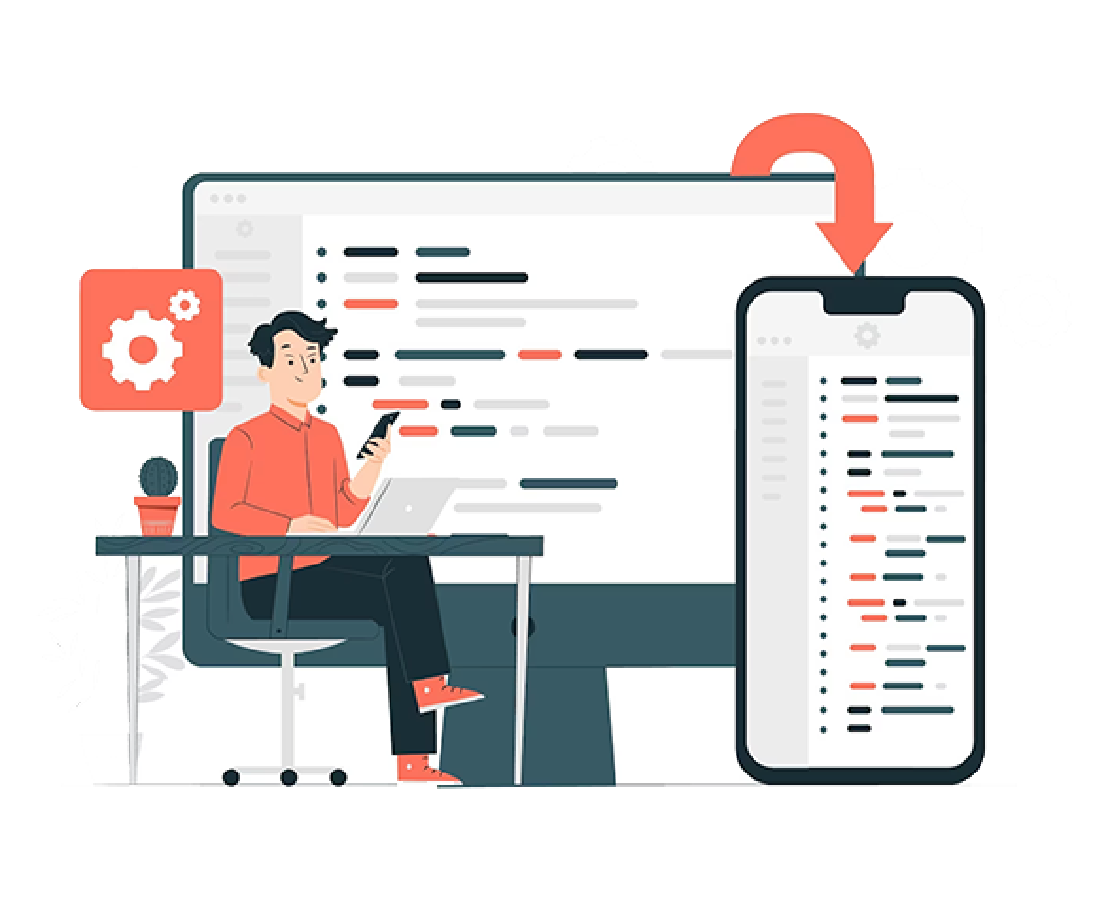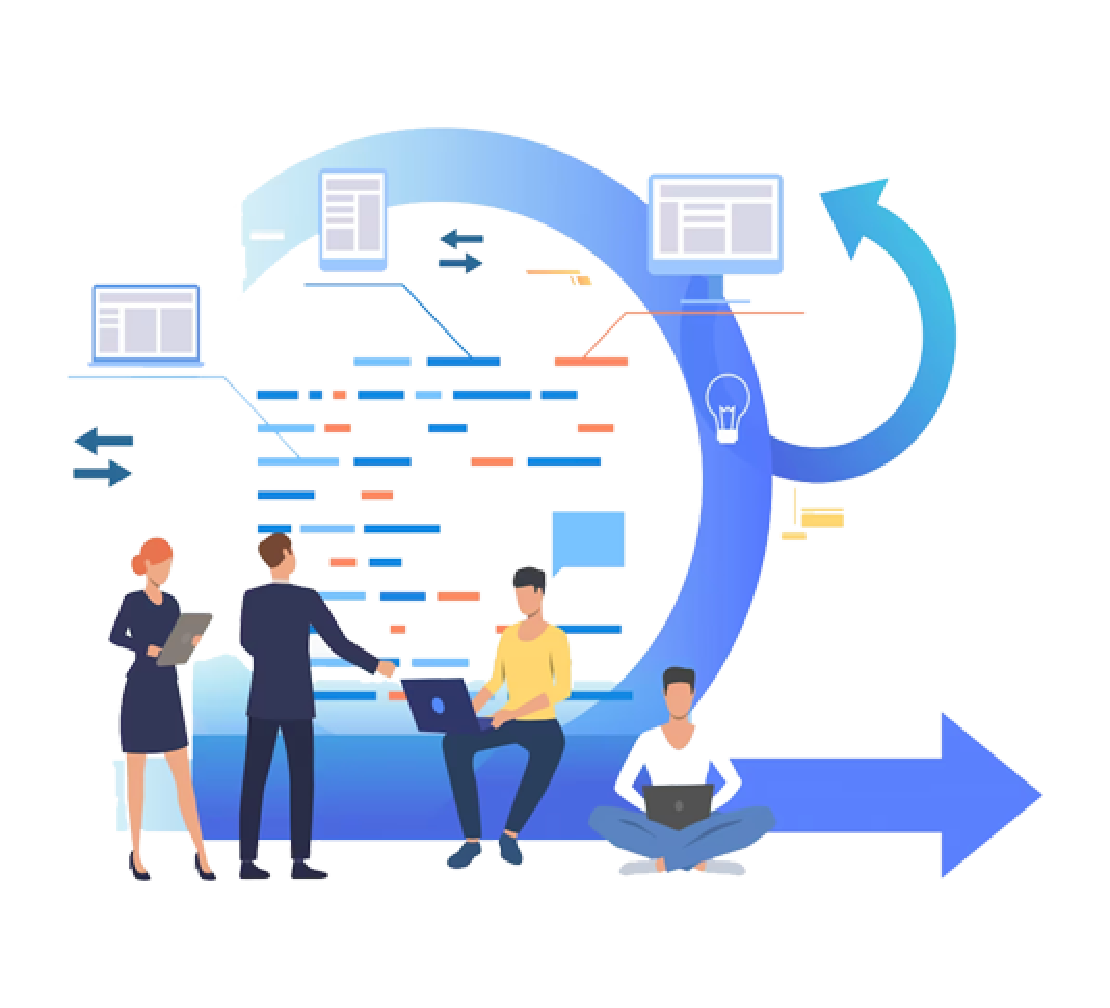SaYukth's
Application Development
Sayukth provides a pool of experts for custom application development outsourcing services to small, medium and large enterprises. We provide our clients with end-to-end application development services, and understand that each business is unique.
We customize the app development process depending on the type, size and nature of each business, as well as the specific requirements of the project. Our skilled software engineers have a wide range of experience in developing high-end applications that are secure, scalable and bug-free.


Well defined
Agile Development Methodology
Agile application development is more suitable for larger projects. Agile is iterative, like Rapid Application Development, but focuses on building features individually. Each feature is built methodically by the team, but the customer is involved in seeing the features and signing off on them before the next feature is developed.
Agile uses sprints or when a certain feature should be built, tested, and presented. It tries to incorporate the entire SDLC for a feature into each sprint. Ideally, this helps stick to a planned schedule and allows frequent reviews. Agile doesn’t focus on prototypes but only presents completed work after the sprint. So while the customer is informed more often than Waterfall, the customer only ever sees finished work, unlike RAD.
Agile project management methodology is also more team or squad-based. With RAD, you are working directly with a programmer. With Agile, the application development team will include testers, UX designers, technical writers, and others.
Key stages
software product development
Conceptualization
It begins with generating ideas for a product that fulfills a specific need or solves a particular problem. This involves market research, identifying target users, and defining the product’s scope and objectives
Requirements Gathering
Gather and analyze requirements. This involves understanding the needs of the target users, defining functional and non-functional requirements, and creating user stories or use cases
Design and Architecture
It focuses on creating the overall structure and architecture of the software product. This includes designing the user interface, database schema, system components, and defining the technical specifications
Development and Coding
In this stage, software developers write the code and implement the design specifications. The development process may follow various methodologies such as Agile, Waterfall, or DevOps.
Testing and QA
It will ensure that the software product meets the defined requirements and functions as intended. This includes creating test plans, test cases, executing tests, and reporting and fixing any defects found.
Deployment and Release
Once testing phase is done and is deemed ready for production, it is deployed to the target environment. This involves preparing the infrastructure, configuring servers, and installing the software product.
Maintenance and Support
After the software product is deployed, ongoing maintenance and support are required to address user feedback, fix bugs, and provide updates and enhancements.
Documentation
Throughout the software product development process, documentation is created to provide instructions, user guides, and technical specifications. User training materials are also prepared
Lifecycle Management
Product managers and development teams work on managing the product’s lifecycle, strategizing updates and new versions, analyzing market trends, and decisions regarding product evolution
